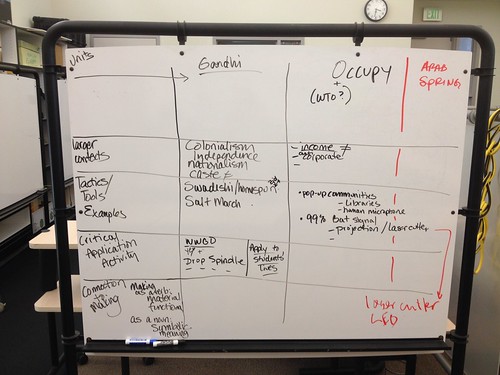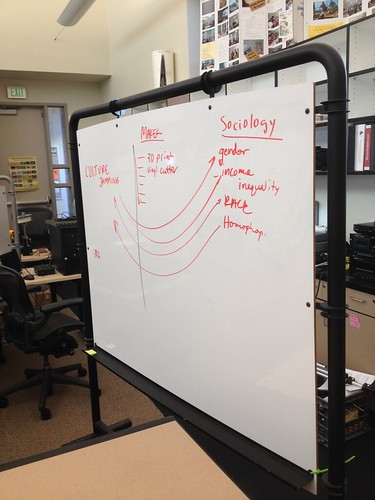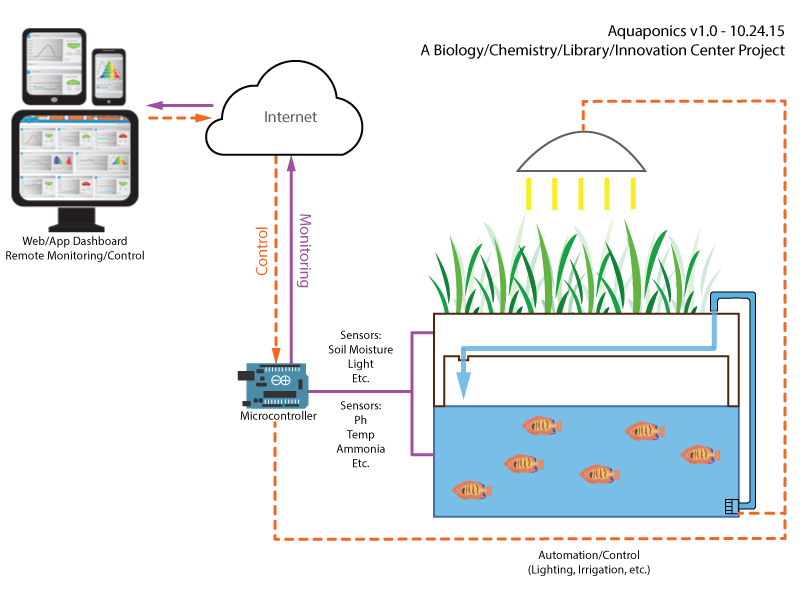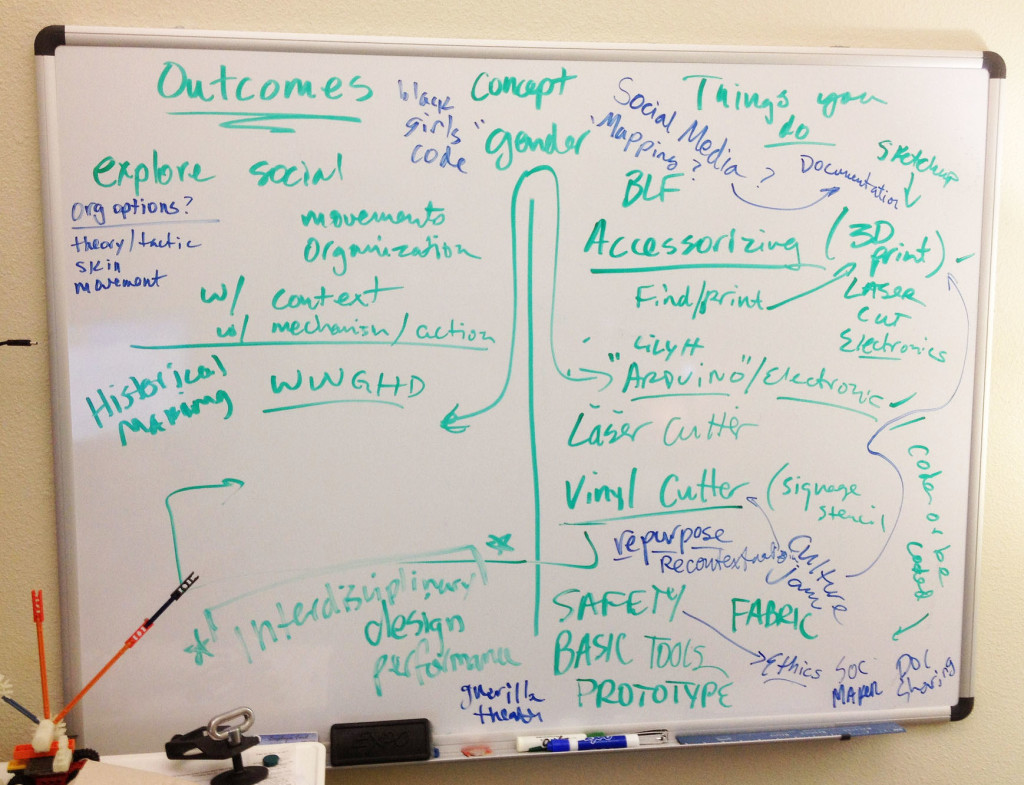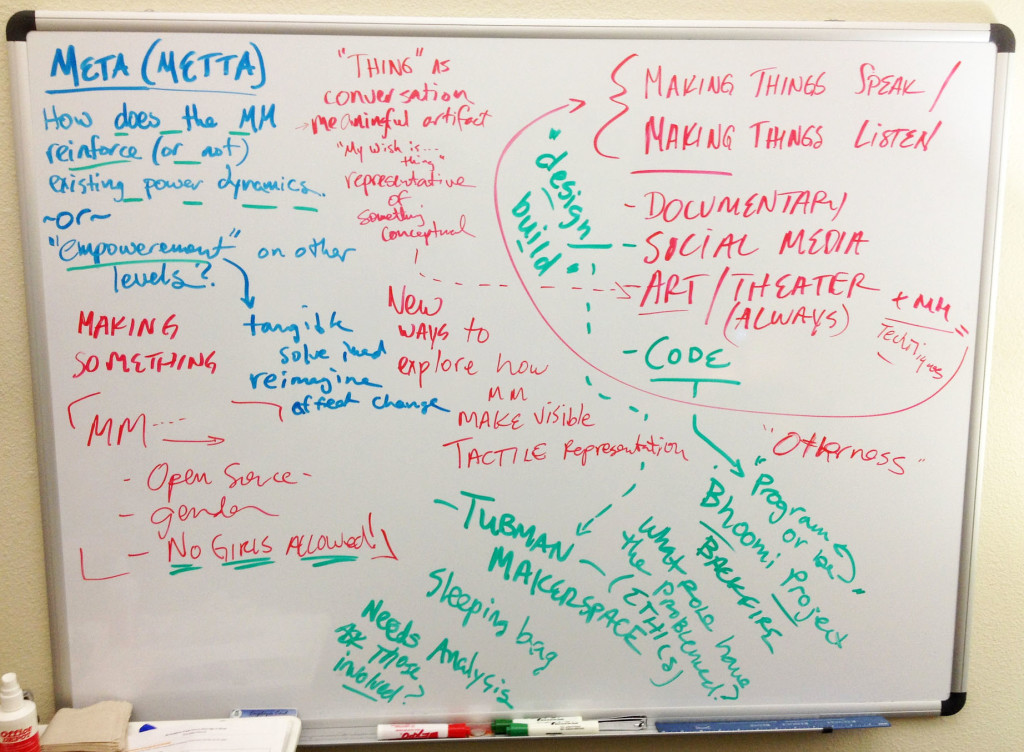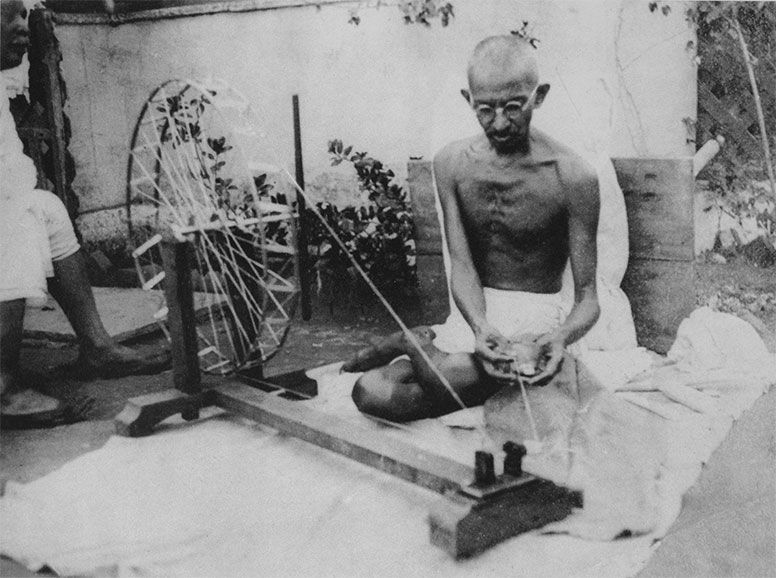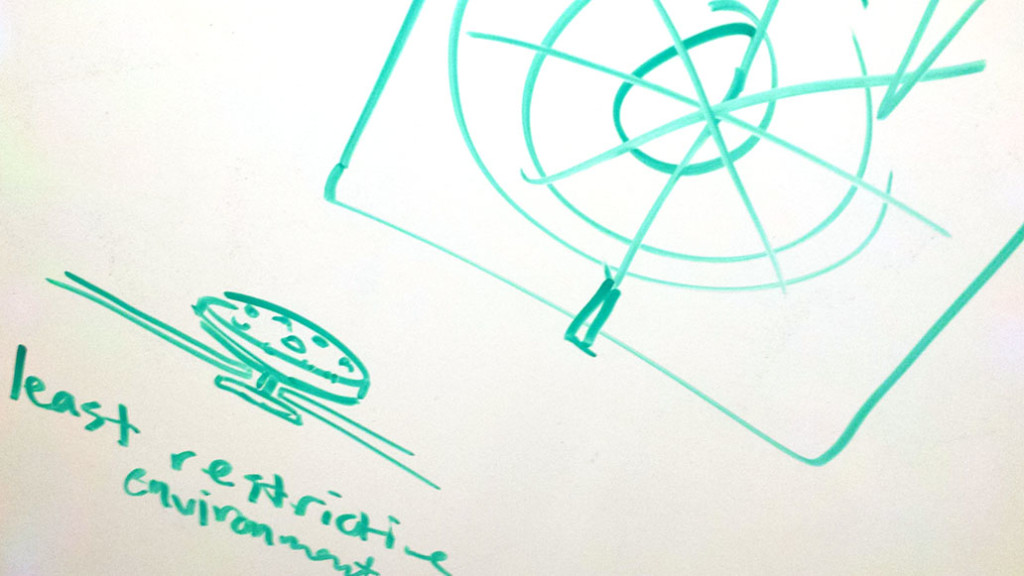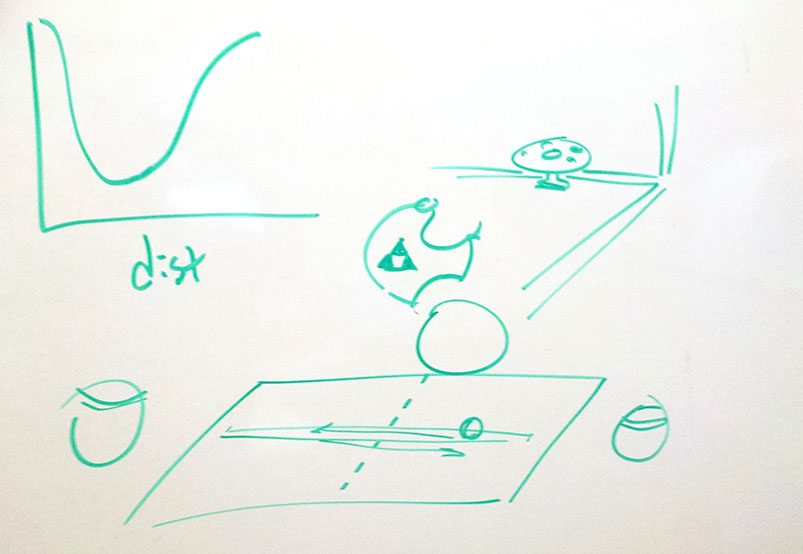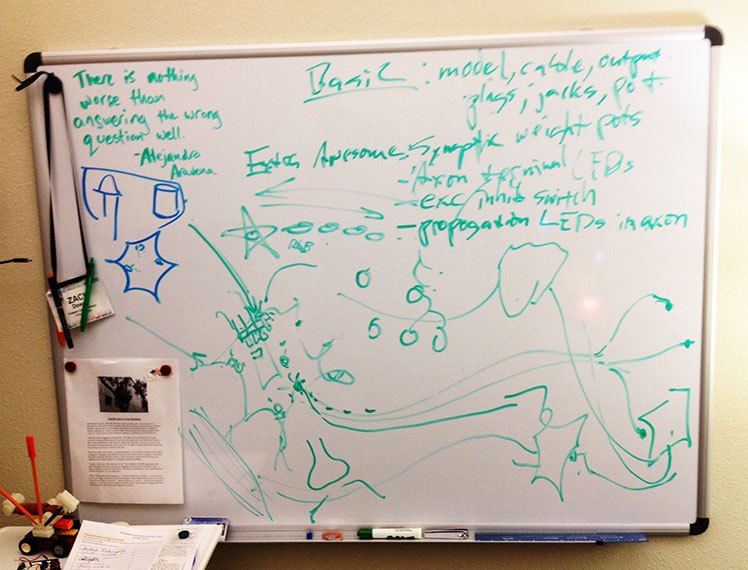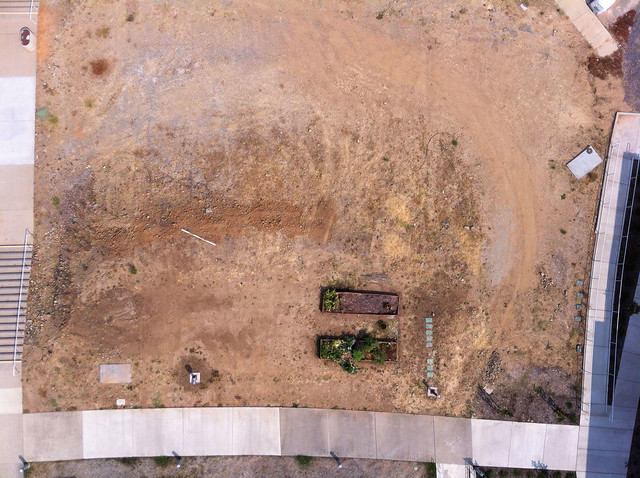A few images of the latest round of conversations with Diane Carlson (Sociology) about the Making Social Change course.
Mark your calendars for these upcoming Online Educators meetings and DE Academy Workshops.
Online Educators – 10-11am in FL1-130 (Innovation Center)
Please join the FLC Online Educators for tea and conversation. We get together to share ideas, talk about technology and teaching, and experiment with new ways to connect with students. Hope to see you there!
November 13 & December 11
DE Academy Workshops – RSVP
November 20 – Transitioning a Course to Hybrid or Online
Thinking of offering a hybrid or online course, but don’t know where to begin? Start here.
10-11AM in FL1-130 (Innovation Center)
December 4 – D2L Crash Course
If you plan to spend your Winter Break working on your online or hybrid class, and want a crash course in D2L, this is the workshop for you. The first half will be useful if you’re a beginner, and the second half if you’ve already got the basics down and want to do more. If you plan to attend, please request a D2L course account (no later than 72 hours before the workshop) so you’ll have a place in which to work. Request a course account via the D2L Faculty Request Interface. Once you’ve completed your course account request, it’s important that you check http://d2l.losrios.edu to be sure the course is there prior to attending the workshop. Note – these workshops will be repeated as part of Spring Flex activities on Thursday, January 14th.
9-11AM in FL1-35 (Library Classroom)
D2L for Beginners (9-10AM) – The basics: D2L interface, content, requesting courses, support, etc.
D2L Intermediate/Advanced (10-11AM) – The rest: Quizzes, communication tools, etc.
December 11 – Beyond the LMS: Tools for Increasing Student Engagement & Success
9-10 AM in FL1-35 (Library Classroom)
Faculty from biology, chemistry, and FLC’s library are working with the Innovation Center to design an aquaponics system. In its simplest form, an aquaponics system is fish on the bottom, plants on the top. We’d like ours to be networked, with remote monitoring and control. Here’s a conceptual diagram:
It is perhaps easier to understand how making applies to the STEM/STEAM disciplines than to disciplines like sociology. In an effort to foster a Making Across the Curriculum ecosystem at the college, it’s important to find ways to empower faculty and students in every discipline with the tools and technologies, and perhaps more importantly the philosophy and ethos of the maker movement. To that end, Diane Carlson (Professor of Sociology) and I have been working on developing a sociology course called “Making Social Change.” Here’s a draft description:
Empowerment through the development of technological skills and access to tools is and will continue to be a significant issue in social justice work and social change. In this interdisciplinary course, students will explore social change through movements, organizations, and groups and the ways those entities use, create, modify, and improve tools and technologies to support and drive change. Students will analyze the contexts and tactics of these movements and synthesize their discoveries with hands-on experience using tools and technologies of the maker movement to develop projects designed to address social, environmental, and economic needs.
Below are artifacts of the two most recent brainstorming sessions:
Gandhi was a maker.
Max Mahoney (Professor of Chemistry) had an idea about using the Innovation Center’s 3D printer to create some manipulatives to help demonstrate to chemistry students concepts of atomic bonding. Something like this:
Here’s what Max has to say about it:
The nature of chemical bonds is rooted in complex physical forces. These forces result in atoms being both attracted and held apart at a specific distance. We hope to develop a hands-on model for students, which conveys this important chemical information. Currently available designs of molecular model kits allow the construction of complex molecules in 3 dimensions, but do a poor job of representing the exact nature of each chemical bond. Our goal is to create a model that will allow students to feel the chemical bond and see the bond lengths. The recently discovered ‘inverter magnets’ have the property of both repelling and attracting each other, so that the atoms seem to hold each other in a ‘tractor beam.’ The distance they are separated represents the bond length.
Initial designs will focus on demonstrating the principle of bond length and bond vibration between two atoms. Enclosures for the inverter magnets are currently being 3D printed and their shapes optimized. These models use strong neodymium magnets so that students can feel the significant push and pull of the two ‘atoms.’ Magnets of different strengths will result in varying degrees of bond strengths (and vibrational rates), which can be measured by the student using force gauges.
Subsequent designs of these models will demonstrate each atom’s unique bonding pattern. Specialized cases for the inverter magnets will be 3D printed to mimic an atom’s ability to form multiple bonds.
The key aspect of these models is that the magnets do not touch and can be made to vibrate at a specific frequency so that the model is dynamic. Currently, students are taught these concepts with either static models, or with video animation. The strength of our model lies in the ability for students see and feel tangible objects displaying atomic principles on a macro scale.
We did some design talking/drawing:
Max went home, bought some magnets, taught himself SketchUp, and has printed a few different prototypes.
Stay tuned…
Sean Fannon (Professor of Psychology and we think coiner of the phrase “arduineuron”) and I have been kicking around ideas for a project consisting of 3D printed neurons and LEDs, all controlled by Arduino. It’s early stage, but I was able to get a little prototype up, using this model of a neuron (CC BY-NC-SA by speborde) and this Arduino sketch/schematic from spikee.io. The neuron starts firing (indicated by the pulsing of the LED) as the potentiometer is rolled up.
The general idea is to create an interactive network of these for use in the Psychology classroom.
Using the prototype above as a starting point, Sean and I sat down to further define the project.
Next steps include securing some electronics, and designing and printing some snap-together dendrite interfaces. I’m also in conversations with Jennifer Kraemer (Professor of Early Childhood Education) to see if we can find a way to also demonstrate the concept of myelination, which Jennifer talks about in her Child Development courses. This neuron project might also come into play. Interdisciplinary goodness!
With the accreditation team visit scheduled for the week ending October 9, 2015, the information below might help to jog your memory if visiting team members ask about DE issues, including Regular Effective Contact and Accessibility:
Regular Effective Contact/Regular Substantive Interaction
- Title 5 defines REC, and stresses the importance of “instructor initiated” contact with students in DE courses.
- REC is the thing that distinguishes DE courses from correspondence courses. FLC does not offer correspondence courses.
- REC is required in both hybrid and online courses. That is, the face-to-face time you spend with your students in a hybrid course does not count as “contact” for the purposes of REC, and you should also maintain contact with your students for the online parts of your course.
- The college has a set of guidelines for online, hybrid and web-enhanced instruction: https://docs.google.com/document/d/1E2fpEQx5kY_lJ3EDf7OJaZv1F8qEjBc-DA7if-hjTzA/edit?usp=sharing
- The district “audited” REC in online and hybrid courses last semester, using the metric of 1 contact per unit per week. For a 3 unit, 100% online course, this would be a minimum of 3 contacts per week. In most courses audited, the contact was evident. In some, contact occurred but was not visible to the auditors, and DO requested additional information from faculty teaching those courses.
- REC can be accomplished in a variety of ways and using a variety of tools, including but not limited to email messages to students, responses to discussion postings, news items, and other forms of feedback.
- The DE course checklist linked below might help you assess REC in your course: https://docs.google.com/document/d/1WdCY14pQ0w-eqlwFl6t4E8i3xEQk1oQ52Z8NIVR7mwk/edit?usp=sharing
- @One offers a very much more in-depth rubric entitled “Standards for Quality Online Teaching” that you may find helpful: https://dl.dropboxusercontent.com/u/60279976/%40ONE_SQOT.pdf
Accessibility
- While it isn’t perfect, D2L as a platform is considered generally accessible to students with disabilities.
- The law states that all video files in your online and hybrid courses should be captioned.
- The law states that you should provide a transcript for all audio files in your online and hybrid courses.
- If you have content in your online or hybrid courses that doesn’t meet accessibility guidelines, it’s important to be aware of and work toward compliance.
- For more information about captioning, you may wish to view this desktop seminar from @One: http://www.3cmediasolutions.org/node/17912
- 3C Media Solutions has a grant-funded captioning service, and you can request captioning for videos that you upload: http://www.3cmediasolutions.org/sites/default/files/How%20to%20Request%20a%20DECT.pdf
- The college will soon be hiring a .6 Education Media Design Specialist, a permanent position working out of the DSP&S office to assist with accessibility issues.

